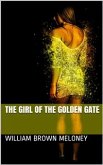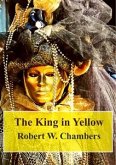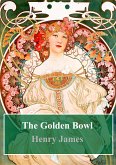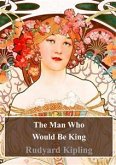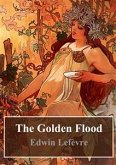"The King of the Golden River" is a delightful fairy tale told with all Ruskin's charm of style, his appreciation of mountain scenery, and with his usual insistence upon drawing a moral. None the less, it is quite unlike his other writings. All his life long his pen was busy interpreting nature and pictures and architecture, or persuading to better views those whom he believed to be in error, or arousing, with the white heat of a prophet's zeal, those whom he knew to be unawakened. There is indeed a good deal of the prophet about John Ruskin. Though essentially an interpreter with a singularly fine appreciation of beauty, no man of the nineteenth century felt more keenly that he had a mission, and none was more loyal to what he believed that mission to be. The King of the Golden River or The Black Brothers: A Legend of Stiria by John Ruskin was originally written in 1841 for the twelve-year-old Effie (Euphemia) Gray, whom Ruskin later married. It was published in book form in 1851, and became an early Victorian classic which sold out three editions. In the "Advertisement to the First Edition", which prefaces it, it is called a fairy tale, one, it might be added, that illustrates the triumph of love, kindness, and goodness over evil; however, it could also be characterised as a fable, a fabricated origin myth and a parable. It was illustrated with 22 illustrations by Richard Doyle (1824–83). It was then illustrated by Arthur Rackham in 1932. The richness of the Treasure Valley, high in the mountains of Stiria or Styria, southeastern Austria, is lost through the evil of the owners, the two elder, "Black Brothers", Hans and Schwartz, who in their foolishness mistreat Southwest Wind, Esquire, who in turn floods their valley, washing away their "liquid assets", and turning their valley into a dead valley of red sand. This personified wind has the power to keep things this way through his influence with other winds that had caused the valley's unique fertility. Forced into a trade other than farming Hans and Schwartz become goldsmiths. They cruelly melt their younger brother Gluck's prize heirloom, a golden mug, which consists of the head of a golden bearded man. This action releases the King of the Golden River for Gluck to pour out of the crucible as a finely dressed little golden dwarf. The Golden River is one of the high mountain cataracts, that surround the Treasure Valley. Gluck fancies that it would be good if that high majestic river would actually be what it appears in the setting sun, a river of gold. The dwarfish king disagrees with Gluck, but offers a proposition: if someone were to climb up to the source of the river and throw into it at least three drops of "holy water", it would become for that person only a river of gold. That person must do it on his first and only attempt or be overwhelmed by the river to become a black stone. Read the complete novel for further story....
Bitte wählen Sie Ihr Anliegen aus.
Rechnungen
Retourenschein anfordern
Bestellstatus
Storno



